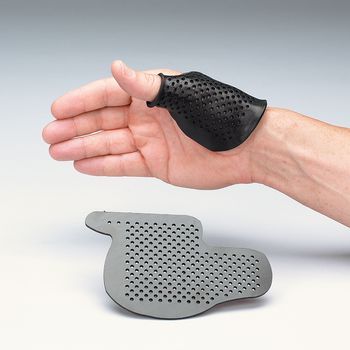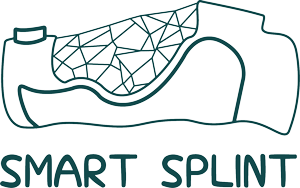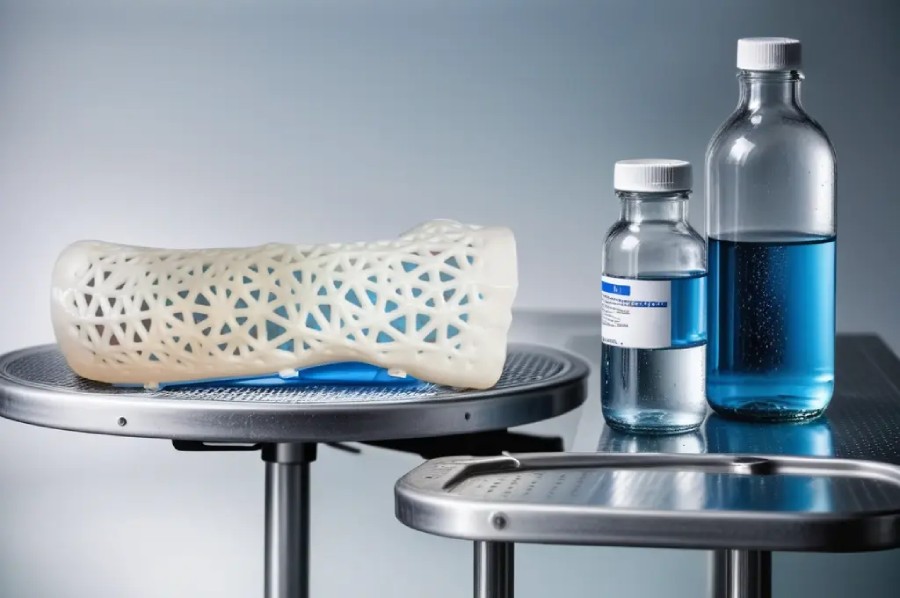
Splint Care and Maintenance: Ensuring Optimal Healing and Comfort
Introduction:
While recovering from a fracture or injury, a splint plays a crucial role in immobilizing the affected area and promoting healing. However, proper care and maintenance of the splint are equally important to ensure a smooth recovery process. In this blog post, we will discuss essential guidelines for caring for your splint, including when to change dressings, signs of complications, bathing/showering protocols, and protecting the splint from moisture and damage.

1. Understanding the Purpose of a Splint:
Before delving into the details of splint care, it is crucial to understand the purpose of a splint. A splint is a rigid or flexible device used to immobilize and support an injured or fractured body part. It helps reduce pain, prevent further injury, and promote healing by keeping the affected area stable and motionless. Splinting relies on the body’s natural tendency toward immobilization to promote the healing of injuries.
By preventing unwanted motions, such as bone ends moving relative to each other in a fracture, splinting allows the body to focus its energies on repairing damaged tissues. It provides protection, aligns broken or dislocated bones into their proper positions, and takes unwanted stresses off of the injury. Adhering to proper splint care guidelines is essential to ensure the splint fulfills its intended purpose of supporting the body during recovery.
2. Caring for Your Splint:
To ensure a successful healing process, here are some important tips on caring for your splint:
a) Keep the Splint Clean and Dry: It is essential to keep the splint clean and dry to prevent infections and unpleasant odors. Avoid getting the splint wet by using waterproof covers or plastic bags to protect it while bathing or showering. Additionally, avoid exposing the splint to excessive moisture, which may weaken its structure. Change dressings covering the splint every few days or as directed by your healthcare provider to monitor the skin underneath for any signs of irritation.
b) Avoid Applying Pressure or Weight on the Splint: Putting excessive pressure or weight on the splint can lead to discomfort, damage, or misalignment. Be cautious while resting or sleeping to avoidinadvertently applying weight to the splint. Use pillows or cushions to elevate the affected body part and reduce swelling. Notify your healthcare provider if edema or swelling increases significantly despite elevation.
c)Avoid Tampering with the Splint: Resist the temptation to scratch or poke inside the splint to relieve itching or discomfort. Instead, use a hairdryer in a cool setting to blow air into the splint and alleviate any itchiness. If severe itching persists for more than a few days, consult your healthcare provider as this could indicate an underlying infection or problem developing under the splint. Additionally, avoid any activities that cause strain or impact on the splinted area to prevent further injury during recovery.
3. Dressing Changes:
Regular dressing changes are essential to maintain hygiene and prevent infections. Here are some guidelines for changing dressings:
a) Follow Medical Advice: Always follow the instructions provided by your healthcare provider regarding dressing changes. They will specify the frequency and technique for changing the dressings based on your specific condition. Do not alter the schedule without seeking approval from your doctor or physical therapist first.
b) Clean Hands and Sterile Materials: Before changing dressings, ensure your hands are clean, and you have sterile materials such as gloves, sterile gauze, and medical tape. Cleanliness is crucial to prevent any contamination. Wash and sanitize the work surface as well.
c) Inspect the Wound: During each dressing change, carefully inspect the wound for signs of infection, such as redness, swelling, increased pain, or discharge. If you notice any concerning symptoms, contact your healthcare provider immediately. They may need to examine the wound in person or prescribe antibiotics. Gently cleaning around the wound edges with sterile saline or water can help assess healing and check for any embedded debris.
d) Redress the Wound: After inspection, pat the skin dry and apply a fresh sterile or clean dressing over the wound. Secure it carefully with tape without putting undue pressure. Elevate the splinted body part afterward to reduce swelling. Document any notable observations from the dressing change in a patient care journal for your provider to review at subsequent follow-up visits.
4. Signs of Complications:
While wearing a splint, it is essential to be vigilant for any signs of complications. Here are some red flags to watch out for:
a) Increased Pain or Swelling: If you experience a sudden increase in pain or swelling, it could indicate a problem with your splint or potential complications. Contact your healthcare provider for further evaluation. They may need to examine for a break or loosening of the splint that is aggravating the healing injury.
b) Numbness or Tingling: Numbness or tingling in the affected area may suggest nerve compression or circulation issues. Promptly notify your healthcare provider if you experience these symptoms. Early intervention can help prevent long-term nerve damage.
c) Foul Odor or Discharge: The presence of a foul odor or abnormal discharge from the splint may indicate an infection. Seek medical attention immediately to prevent further complications. Infections can slow healing and potentially cause lasting harm if not promptly treated.
d) Changes in Appearance: Pay attention to any changes in your splint’s appearance like cracks, loosening of straps/covers, or swelling. This could mean the splint needs adjusting or replacing to provide proper healing support. Conditions may temporarily worsen if the splint no longer adequately immobilizes the injury. Inform your healthcare provider of any visible splint alterations.
Early reporting of potential issues allows for timely medical examination and management and leads to better recovery outcomes. Do not hesitate to contact a doctor or physical therapist about any post-splint complications.
5. Bathing and Showering Protocols:
Maintaining personal hygiene while wearing a splint is crucial. Follow these guidelines for bathing and showering:
a) Waterproof Covers: Use waterproof covers or plastic bags to protect the splint from getting wet during bathing or showering. Ensure that the cover is securely sealed to prevent water from seeping in. Inspect covers regularly replace them and replace them as needed.
b) Sponge Baths: If the splint cannot be exposed to water, opt for sponge baths to keep yourself clean. Use a damp cloth or sponge to gently clean the areas that are not covered by the splint. Avoid soaking or submerging the splinted area.
c) Drying the Splint: After bathing or showering, carefully dry the splint using a towel or a hairdryer in a cool setting. Ensure that the splint is completely dry before reapplying any dressings. Pay special attention to drying between fingers, toes, or any skin creases near the splint to avoid chafing or fungal infections.
d) Alternative Options: Consult your healthcare provider about suitable alternatives if the splint cannot be reliably protected from water. Temporary cast/splint covers available in waterproof materials from medical supply stores may provide a better seal. In very rare situations, a short, localized plastic wrap may permit critical areas to be carefully washed.
Proper bathing/showering techniques prevent water exposure-related splint complications. Ask your doctor for guidance in adapting protocols as the injury heals. Keeping hygiene standards reduces the risks of skin infections or delays in recovery.
6. Protecting the Splint from Moisture and Damage:
To ensure the longevity and effectiveness of your splint, it is crucial to protect it from moisture and damage. Here are some strategies to consider:
a) Avoid Extreme Temperatures:
Do not expose your splint to extreme temperatures, as this can compromise its structure. Avoid direct sunlight, heating pads, or ice packs directly on the splint.
b) Use Padding and Protection:
To prevent accidental bumps or knocks, consider using padding or protective covers around the splint. This can help minimize the risk of damage and provide additional comfort.
c) Follow Professional Advice:
Always follow the specific care instructions provided by your healthcare provider or orthopedic specialist. They may have additional recommendations based on your unique circumstances.
Conclusion:
Proper care and maintenance of your splint are crucial for ensuring optimal healing and comfort during your recovery process. By following the guidelines discussed in this blog post, you can protect your splint from moisture and damage, prevent infections, and identify signs of complications. Remember to consult your healthcare provider if you have any concerns or questions regarding the care of your splint. With proper care, your splint will become a valuable ally in your journey toward healing and recovery.


